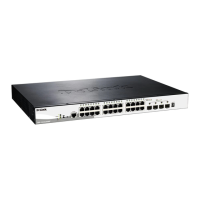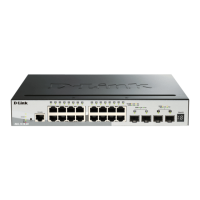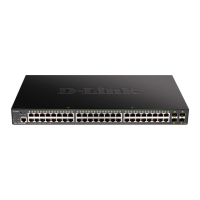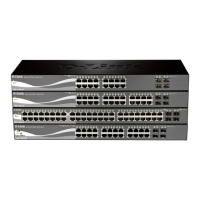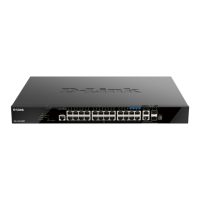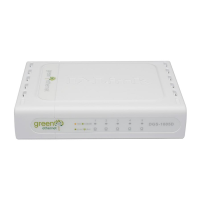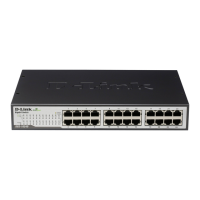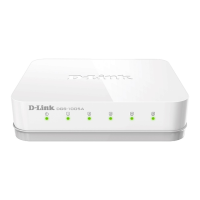DGS-1510 Series Gigabit Ethernet SmartPro Switch Hardware Installation Guide
36
In SNMPv1 and SNMPv2, user authentication is accomplished using 'community strings', which
function like passwords. The remote user SNMP application and the Switch SNMP must use the
same community string. SNMP packets from any station that has not been authenticated are ignored
(dropped).
The default community strings for the Switch used for SNMPv1 and SNMPv2 management access
are:
• public - Allows authorized management stations to retrieve MIB objects.
• private - Allows authorized management stations to retrieve and modify MIB objects.
SNMPv3 uses a more sophisticated authentication process that is separated into two parts. The first
part is to maintain a list of users and their attributes that are allowed to act as SNMP managers. The
second part describes what each user on that list can do as an SNMP manager.
The Switch allows groups of users to be listed and configured with a shared set of privileges. The
SNMP version may also be set for a listed group of SNMP managers. Thus, a group of SNMP
managers can be created to view read-only information or receive traps using SNMPv1 while
assigning a higher level of security to another group, granting read/write privileges using SNMPv3.
Using SNMPv3 individual users or groups of SNMP managers can be allowed to perform or be
restricted from performing specific SNMP management functions. The functions allowed or restricted
are defined using the Object Identifier (OID) associated with a specific MIB. An additional layer of
security is available for SNMPv3 in that SNMP messages may be encrypted.
Traps
Traps are messages that alert network personnel of events that occur on the Switch. The events can
be as serious as a reboot (someone accidentally turned OFF the Switch), or less serious like a port
status change. The Switch generates traps and sends them to the trap recipient (or network manager).
Typical traps include trap messages for Authentication Failure, Topology Change and
Broadcast\Multicast Storm.
Management Information Base (MIB)
The Switch in the Management Information Base (MIB) stores management and counter information.
The Switch uses the standard MIB-II Management Information Base module. Consequently, values
for MIB objects can be retrieved from any SNMP-based network management software. In addition to
the standard MIB-II, the Switch also supports its own proprietary enterprise MIB as an extended
Management Information Base. The proprietary MIB may also be retrieved by specifying the MIB
Object Identifier. MIB values can be either read-only or read-write.
NOTE: For customers interested in D-View, D-Link Corporation's proprietary SNMP
management software, go to http://dview.dlink.com.tw/
and download the
software and manual.

